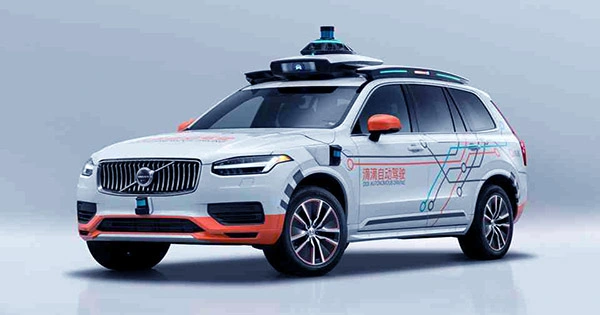Volvo Cars said on Wednesday at CES that it is collaborating with lidar startup Luminar and its autonomous driving (AD) software subsidiary Zenseact to provide an AD capability to its next generation of completely electric cars. The technology, dubbed “Ride Pilot,” will first offer as an add-on subscription to an electric SUV that will be unveiled later this year. Ride Pilot is an “unsupervised” AD function, according to Volvo, which means the car will be able to drive it, providing passengers plenty of opportunities to engage in “secondary activities like as reading, writing, working, or socializing.”
Since at least March 2021, when the two firms disclosed ambitions to merge tech to create a “holistic autonomous vehicle stack” that could be supplied to other automakers, Luminar and Zenseact, in which Volvo holds a majority investment, have been working on developing these capabilities, Volvo’s primary computational system will be powered by Nvidia’s system-on-a-chip. Volvo is the latest carmaker to have a plan for bringing autonomous commercial passenger vehicles to market.
Tesla has released its “Autopilot” and “Full Self-Driving” software, both of which rely solely on cameras and computer vision technology to provide advanced driver assistance features such as autosteering within a clearly marked lane, traffic-aware cruise control, auto lane change, auto park, summon, and traffic and stop sign control. Xpeng, a Chinese manufacturer, is also releasing its “Xpilot” next-generation ADAS, which uses lidar, radar, and cameras to give automatic navigation aided driving from point to point dependent on the driver’s path.
“The crucial thing about Ride Pilot is that it’s genuinely self-driving,” Volvo’s VP of digital business Martin Kristensson told TechCrunch. “You are not required to have your hands on the driving wheel at all times. You are not required to glance forward. You can eat your breakfast, read a book, or watch a movie in the car, and it will drive itself. When the automobile drives itself, we will assume responsibility. So, in that respect, I believe it is an offer that does not already exist on the market.”
Before Ride Pilot is released to the public, Volvo claims it will go through a thorough verification and testing process, which will involve verifying the technology for safe usage on highways in a variety of situations. Ride Pilot will be accessible on a restricted operational design domain, to begin with. It will only be able to travel on roadways that Volvo has approved and at reduced speeds.
Customers in California will be the first to use Ride Pilot before it expands to other regions, which makes sense given the state’s friendly regulatory climate for autonomous testing, sunny weather, and clogged roadways. Commuters in Los Angeles said to spend an average of 119 hours a year stuck in traffic, time Volvo believes could be better spent elsewhere. Volvo will still require permission to test its vehicles on California roads, but Kristensson says the business is “in contact with key regulatory organizations, including the California DMV, to achieve the necessary clearances.”
The business is currently only testing Ride Pilot with Zenseact in Sweden, but it aims to get the required permissions to begin testing on public roads in California by the middle of the year. Volvo’s regulatory requirements for using this technology on a commercial scale are not yet mature enough for what the industry has to offer.
California, for example, has regulations prohibiting drivers from using their phones while driving, which might be a stumbling block for Volvo’s intentions to attract customers to sign up for Ride Pilot so they can read through Twitter or answer emails while the car drives itself.















